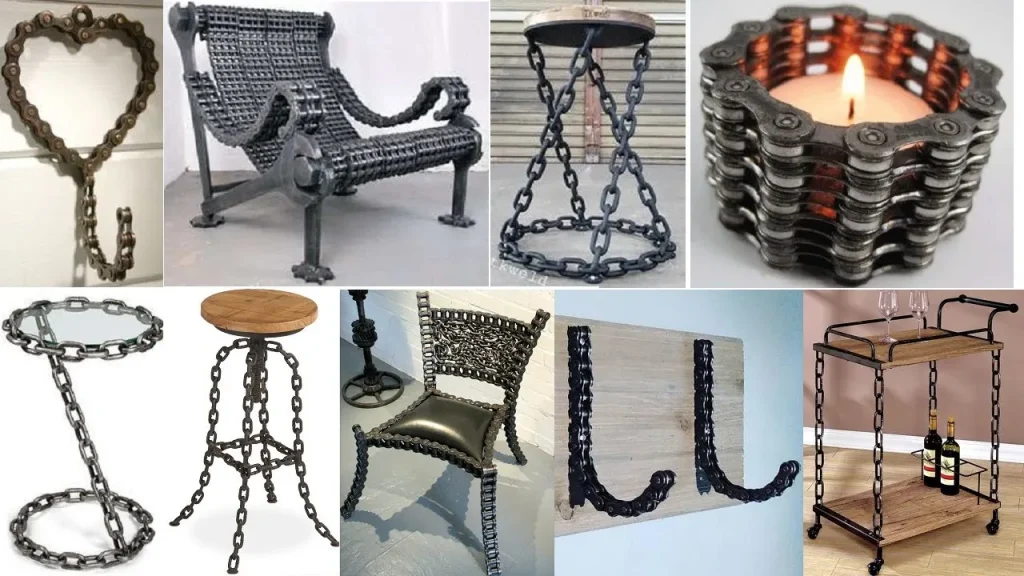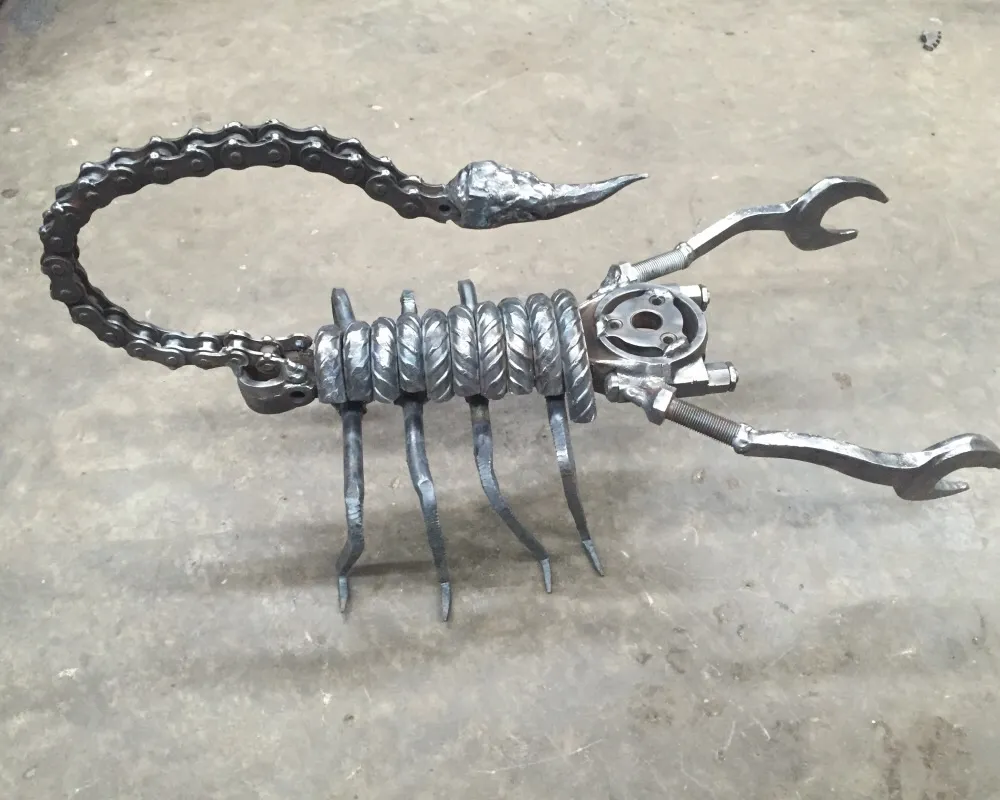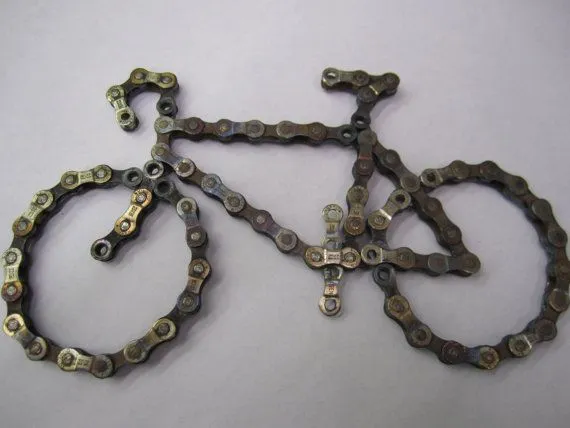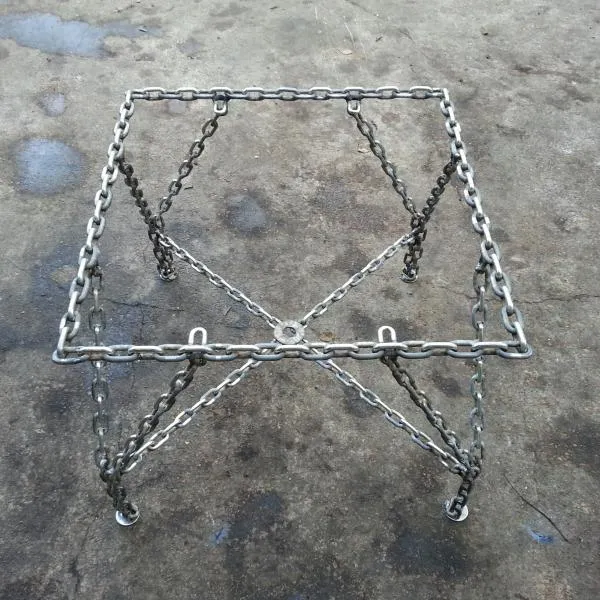Introduction to Chain Welding

What is Chain Welding?
Chain welding is a specialized welding technique that involves joining chain links together using welding processes. It is commonly used in various industries, including construction, manufacturing, and creative arts, due to its strength and versatility. The process requires precision and skill to ensure that the welded joints are strong and durable.
Applications and Benefits
Chain welding has numerous applications:
- Industrial Use: In construction and manufacturing, chain welding is used to create strong, reliable connections in machinery, lifting equipment, and structural components.
- DIY Projects: Hobbyists and DIY enthusiasts use chain welding for creative projects such as furniture, decorative items, and custom tools.
- Artistic Creations: Artists use chain welding to create unique sculptures and installations.
Benefits of Chain Welding:
- Strength and Durability: Welded chains offer high strength and durability, making them suitable for heavy-duty applications.
- Flexibility: The technique allows for the creation of various shapes and structures, providing flexibility in design.
- Cost-Effective: Using chain welding can be more cost-effective than other joining methods due to the reduced need for additional materials and components.
Basic Chain Welding Projects

Tool Holder from Chains
A simple yet functional project for beginners is creating a tool holder from welded chains. This project helps you get acquainted with basic welding techniques and the use of essential tools.
Materials and Tools Needed:
- Chains
- Welding machine
- Safety gear (gloves, welding mask, protective clothing)
- Metal brackets or hooks
Steps to Create a Tool Holder:
- Prepare the Chains: Measure and cut the chains to the desired lengths for the tool holder.
- Set Up the Welding Area: Ensure a safe and clean workspace, and put on your safety gear.
- Weld the Chains Together: Weld the chain links together to form the structure of the tool holder. Attach metal brackets or hooks at appropriate points to hold the tools.
- Finish and Inspect: Once the welding is complete, inspect the joints for strength and smooth any rough edges.
Chain Decor Lamp
Creating a decorative lamp from welded chains is an excellent way to combine functionality with creativity.
Materials and Tools Needed:
- Chains
- Welding machine
- Lamp kit (socket, wiring, bulb)
- Safety gear
- Metal base or frame
Steps to Create a Chain Decor Lamp:
- Design the Lamp: Sketch a design for your lamp, deciding how the chains will be arranged.
- Prepare the Chains: Cut the chains to the required lengths according to your design.
- Weld the Chains: Weld the chain links together to form the lamp structure. Attach the lamp socket and wiring securely.
- Assemble the Lamp: Connect the lamp structure to the metal base or frame and install the bulb.
- Test the Lamp: Ensure all electrical connections are safe and test the lamp to make sure it works properly.
These basic projects provide a good foundation for understanding the essentials of chain welding. They help build the skills and confidence needed to take on more complex projects in the future.
Advanced Chain Welding Projects

Outdoor Furniture from Welded Chains and Wood
Creating outdoor furniture using welded chains and wood combines durability with aesthetic appeal. This project is more advanced and requires a good understanding of welding techniques and design principles.
Materials and Tools Needed:
- Chains
- Welding machine
- Wooden planks (for seats and backs)
- Safety gear (gloves, welding mask, protective clothing)
- Metal brackets and screws
Steps to Create Outdoor Furniture:
- Design the Furniture: Sketch a detailed design of the furniture, specifying the dimensions and the arrangement of chains and wooden planks.
- Prepare the Materials: Cut the chains to the required lengths and prepare the wooden planks by cutting and sanding them to the desired size.
- Weld the Chains: Weld the chains together to form the frame of the furniture. Ensure the joints are strong and stable.
- Attach the Wooden Planks: Secure the wooden planks to the welded chain frame using metal brackets and screws. Make sure the planks are firmly attached and level.
- Finishing Touches: Inspect the entire piece for any rough edges or weak joints. Sand and paint the wooden parts if desired to protect them from the elements.
Artistic Sculptures from Chain Welding
Creating sculptures from welded chains allows for immense creativity and artistic expression. This project involves using chains to craft unique and intricate designs.
Materials and Tools Needed:
- Chains
- Welding machine
- Safety gear (gloves, welding mask, protective clothing)
- Base or stand for the sculpture
Steps to Create Artistic Sculptures:
- Conceptualize the Design: Create a detailed sketch or model of the sculpture you wish to create. Consider the balance, stability, and visual impact of the design.
- Prepare the Chains: Cut the chains into various lengths based on your design.
- Weld the Chains: Start welding the chain links together to form the basic structure of the sculpture. Gradually build up the details by adding more chain links.
- Stabilize the Sculpture: Ensure the sculpture is balanced and stable by attaching it to a sturdy base or stand.
- Finishing and Detailing: Inspect the sculpture for any weak points and reinforce them if necessary. Add any final touches to enhance the visual appeal.
These advanced projects not only enhance welding skills but also allow for creative exploration. Whether it’s crafting durable outdoor furniture or designing unique sculptures, these projects demonstrate the versatility and artistic potential of chain welding.
Advanced Welding Techniques

Welding Chains in Harsh Conditions
Welding chains in harsh conditions, such as extreme temperatures, high humidity, or dusty environments, requires specialized techniques and precautions to ensure strong and durable welds.
Key Techniques and Precautions:
- Pre-Heating the Chains: In cold environments, pre-heating the chains helps to reduce thermal stress and prevent cracking.
- Controlled Cooling: Slow and controlled cooling of the welds helps to avoid sudden temperature changes that can cause the welds to become brittle.
- Protective Coatings: Applying protective coatings to the welded chains can prevent corrosion in high humidity or corrosive environments.
- Dust Control: Using welding enclosures or screens can help to minimize the impact of dust on the welding process.
Steps for Welding in Harsh Conditions:
- Prepare the Chains: Clean the chains thoroughly to remove any dirt, grease, or corrosion.
- Set Up a Controlled Environment: If possible, create a controlled environment to minimize the impact of external factors.
- Use Appropriate Welding Techniques: Choose the welding technique that is best suited for the specific conditions, such as MIG, TIG, or stick welding.
- Monitor the Welding Process: Continuously monitor the welding process to ensure consistent quality and address any issues immediately.
Combining Chain Welding with Other Materials
Combining chain welding with other materials, such as metals, wood, and glass, allows for the creation of innovative and aesthetically pleasing projects.
Key Techniques:
- Welding Metal to Metal: When combining chains with other metals, use compatible welding techniques to ensure strong joints.
- Joining Chains to Wood: Use metal brackets and screws to securely attach chains to wooden components.
- Incorporating Glass: Use specialized adhesives or mechanical fasteners to incorporate glass elements into chain welding projects.
Steps for Combining Materials:
- Design the Project: Create a detailed design that outlines how the different materials will be combined.
- Prepare the Materials: Cut and prepare all materials according to the design specifications.
- Weld the Chains: Start by welding the chains together to form the main structure of the project.
- Attach Other Materials: Securely attach the other materials to the welded chain structure using the appropriate techniques.
- Inspect and Finish: Inspect the entire project for any weak points or imperfections and apply finishing touches as needed.
By mastering these advanced techniques, you can tackle more complex and challenging projects that push the boundaries of traditional chain welding. These skills open up new possibilities for creating functional, durable, and visually striking works.
Safety Precautions in Chain Welding
Personal Protective Equipment (PPE)
Ensuring safety during chain welding is paramount. Proper personal protective equipment (PPE) helps prevent injuries and ensures a safe working environment.
Essential PPE for Chain Welding:
- Welding Helmet: Protects the eyes and face from harmful UV rays, sparks, and debris.
- Welding Gloves: Provides protection against heat, electrical shock, and sharp objects.
- Protective Clothing: Flame-resistant jackets and pants shield the body from sparks and heat.
- Safety Glasses: Additional protection for the eyes against flying particles when the helmet is not in use.
- Steel-Toed Boots: Protects feet from falling objects and provides insulation from electrical hazards.
Risk Assessment and Hazard Prevention
Conducting a thorough risk assessment and taking preventive measures can significantly reduce the likelihood of accidents.
Key Risk Assessment Steps:
- Identify Hazards: Recognize potential hazards in the welding environment, such as flammable materials, electrical sources, and sharp objects.
- Evaluate Risks: Assess the likelihood and severity of each identified hazard.
- Implement Controls: Develop and implement measures to eliminate or minimize risks, such as proper ventilation, clear workspaces, and safety barriers.
Preventive Measures:
- Proper Ventilation: Ensure adequate ventilation to avoid inhaling harmful fumes and gases.
- Clear Work Area: Keep the welding area clean and free of clutter to prevent trips and falls.
- Regular Equipment Maintenance: Regularly inspect and maintain welding equipment to ensure it is in good working condition.
- Fire Safety: Keep fire extinguishers and other fire fighting equipment nearby and ensure they are easily accessible.
Safe Welding Practices
Adhering to safe welding practices is crucial for preventing accidents and ensuring a safe working environment.
Best Practices:
- Proper Training: Ensure all individuals involved in welding are adequately trained and aware of safety protocols.
- Follow Manufacturer Instructions: Always follow the manufacturer’s instructions for using welding equipment.
- Monitor Work Environment: Continuously monitor the work environment for any changes that could introduce new hazards.
- Use Appropriate Welding Techniques: Choose the right welding technique for the specific project and conditions.
- Stay Alert: Remain focused and alert while welding to respond quickly to any unexpected situations.
By following these safety precautions, you can minimize the risks associated with chain welding and create a safer work environment. Ensuring safety not only protects you and those around you but also contributes to the overall success and quality of your welding projects.
Learning Resources and Communities

Courses and Books on Chain Welding
Expanding your knowledge and skills in chain welding can be greatly facilitated by taking courses and reading specialized books.
Recommended Courses:
- Online Welding Courses: Websites like Udemy, Coursera, and LinkedIn Learning offer comprehensive welding courses that cover basic to advanced techniques, including chain welding.
- Technical Schools and Community Colleges: Many local technical schools and community colleges provide hands-on welding courses with professional instructors.
Recommended Books:
- “Welding for Beginners” by Stephen Blake Christena: A great starting point for those new to welding, covering fundamental techniques and safety tips.
- “The Welding Business Owner’s Hand Book” by David Zielinski: Provides insights into setting up a welding business, with practical advice on projects and management.
- “Modern Welding” by Andrew D. Althouse, Carl H. Turnquist, and William A. Bowditch: A comprehensive resource that covers various welding techniques, including detailed sections on safety and advanced welding processes.
Forums and Online Communities
Joining forums and online communities can be an invaluable way to connect with other welding enthusiasts, share experiences, and seek advice.
Popular Online Communities:
- WeldingWeb: A highly active forum where welders of all skill levels discuss projects, techniques, and troubleshooting.
- Reddit – r/Welding: A subreddit dedicated to welding, offering a mix of beginner questions, expert advice, and project showcases.
- Weld.com: An online platform with forums, instructional videos, and articles focused on various welding topics.
Social Media Groups
Social media platforms host numerous groups and pages where you can follow the latest trends, get inspired by project ideas, and interact with other welders.
Notable Social Media Groups:
- Facebook Groups:
- “Welders Worldwide”: A global community of welders sharing tips, project photos, and industry news.
- “DIY Welding Projects”: Focuses on home welding projects, providing a space for hobbyists to exchange ideas.
- Instagram:
- Follow hashtags like #welding, #chainwelding, and #weldart to see inspiring photos and videos of welding projects.
- YouTube Channels:
- “ChuckE2009”: Offers practical welding tutorials and project ideas.
- “The Fabrication Series”: Features detailed welding techniques and tips for both beginners and professionals.
By leveraging these learning resources and engaging with the welding community, you can continuously improve your skills, stay updated with industry developments, and find inspiration for your chain welding projects.
Chain Welding in Art
Artistic Applications of Chain Welding
Chain welding is not just limited to industrial and DIY projects; it also has a significant place in the world of art. Artists use chain welding to create intricate and visually stunning sculptures and installations.
Examples of Artistic Applications:
- Sculptures: Artists weld chains into various shapes and forms to create abstract and representational sculptures.
- Public Art Installations: Large-scale public art installations often feature chain welding for their durability and unique aesthetic.
- Furniture Art: Some artists blend functionality with art by creating unique furniture pieces from welded chains.
Notable Artists and Their Works
Several artists are known for their exceptional work with chain welding, each bringing their unique style and vision to the medium.
Notable Artists:
- David Smith: Known for his abstract sculptures, Smith often used welding techniques to combine different metal elements, including chains.
- Antony Gormley: Gormley’s works frequently explore the human form, and he has used welded chains in some of his installations to create intricate and thought-provoking pieces.
- Richard Serra: Serra’s large-scale sculptures often involve welded metal, and his innovative use of materials has influenced many contemporary artists.
How to Start Creating Chain Welding Art
For those interested in exploring chain welding as an artistic medium, starting with simple projects and gradually increasing complexity is key.
Steps to Start Creating Chain Welding Art:
- Learn Basic Welding Techniques: Master the basics of welding before attempting more complex artistic projects.
- Gather Materials: Collect chains and other metal pieces that can be welded together. Look for unique shapes and sizes to add interest to your work.
- Sketch Your Design: Draw out your design beforehand to visualize the final piece and plan the welding process.
- Weld the Structure: Begin welding the chains together according to your design. Pay attention to the stability and balance of the sculpture.
- Add Details: Once the basic structure is complete, add finer details and finishing touches to enhance the piece’s aesthetic appeal.
- Finish and Display: Clean and polish the sculpture if necessary, and consider how it will be displayed or installed.
Conclusion
Chain welding offers a versatile and robust method for creating both functional and artistic projects. Whether you’re a beginner looking to start with simple DIY projects or an experienced welder aiming to explore artistic possibilities, the techniques and ideas presented here provide a solid foundation for your chain welding journey. Engaging with the welding community and continuously learning through courses and resources will further enhance your skills and inspire new creations.
Leave a Reply